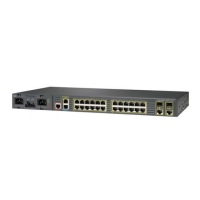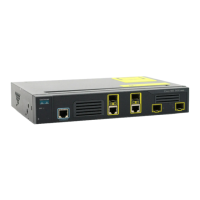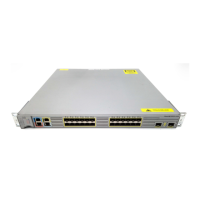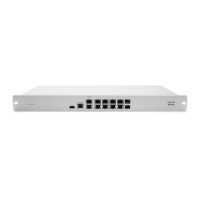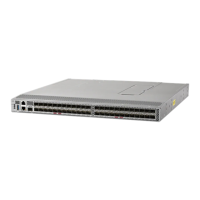35-72
Cisco ME 3400 Ethernet Access Switch Software Configuration Guide
OL-9639-07
Chapter 35 Configuring IP Unicast Routing
Configuring BFD
Configuring BFD
The Bidirectional Forwarding Detection (BFD) Protocol quickly detects forwarding-path failures for a
variety of media types, encapsulations, topologies, and routing protocols. It operates in a unicast,
point-to-point mode on top of any data protocol being forwarded between two systems to track IPv4
connectivity between directly connected neighbors. BFD packets are encapsulated in UDP packets with
a destination port number of 3784 or 3785.
In EIGRP, IS-IS, and OSPF deployments, the closest alternative to BFD is the use of modified
failure-detection mechanisms. Although reducing the EIGRP, IS-IS, and OSPF timers can result in a
failure-detection rate of 1 to 2 seconds, BFD can provide failure detection in less than 1 second. BFD
can be less CPU-intensive than the reduced timers and, because it is not tied to any particular routing
protocol, it can be used as a generic and consistent failure detection mechanism for multiple routing
protocols.
To create a BFD session, you must configure BFD on both systems (BFD peers). Enabling BFD at the
interface and routing protocol level on BFD peers creates a BFD session. BFD timers are negotiated and
the BFD peers send control packets to each other at the negotiated intervals. If the neighbor is not
directly connected, BFD neighbor registration is rejected.
Figure 35-6 shows a simple network with two routers running OSPF and BFD. When OSPF discovers a
neighbor (1), it sends a request to the BFD process to initiate a BFD neighbor session with the neighbor
OSPF router (2), establishing the BFD neighbor session (3).
show clns filter-set Display filter sets.
show clns interface [interface-id] Display the CLNS-specific or ES-IS information about each interface.
show clns neighbor Display information about IS-IS neighbors.
show clns protocol List the protocol-specific information for each IS-IS or ISO IGRP routing
process in this router.
show clns route Display all the destinations to which this router knows how to route CLNS
packets.
show clns traffic Display information about the CLNS packets this router has seen.
show ip route isis Display the current state of the ISIS IP routing table.
show isis database Display the IS-IS link-state database.
show isis routes Display the IS-IS Level 1 routing table.
show isis spf-log Display a history of the shortest path first (SPF) calculations for IS-IS.
show isis topology Display a list of all connected routers in all areas.
show route-map Display all route maps configured or only the one specified.
trace clns destination Discover the paths taken to a specified destination by packets in the network.
which-route {nsap-address | clns-name} Display the routing table in which the specified CLNS destination is found.
Table 35-13 ISO CLNS and IS-IS Clear and Show Commands (continued)
Command Purpose
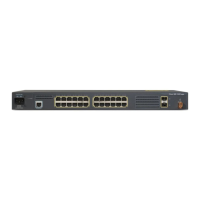
